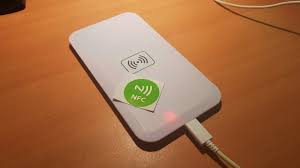Table of Contents
ПереключатьВведение
Wireless charging is rapidly becoming a mainstream method of powering electronic devices, and Near Field Communication (НФК) is one of the technologies leading this revolution. NFC wireless charging stands out due to its unique ability to combine data transfer capabilities with power delivery, making it a versatile and efficient solution. This article will delve into what NFC wireless charging is, how it works, its advantages, and the potential future applications of this innovative technology.

The Basics of NFC Wireless Charging
NFC, or Near Field Communication, is a short-range wireless communication technology that enables devices to exchange data when they are in close proximity, typically within a few centimeters. NFC wireless charging harnesses this technology to not only facilitate data transfer but also to deliver power to compatible devices.
How NFC Wireless Charging Works
NFC wireless charging operates through the use of electromagnetic induction. The process involves three main components: a power transmitter, a receiver embedded in the device, and an interface to control the power transfer. Here’s a step-by-step breakdown of how it works:
- Initiation: When an NFC-enabled device comes into close proximity with an NFC transmitter, the transmitter and receiver establish a communication link.
- Inductive Coupling: The transmitter coil generates a magnetic field when alternating current flows through it. This magnetic field induces a current in the receiver coil within the device, creating a power transfer.
- Power Conversion: The induced current in the receiver coil is converted into direct current (DC) voltage, which then charges the device’s battery.
- Передача данных: Simultaneously, NFC can be used to exchange data, enhancing functionality by allowing devices to communicate and engage in tasks such as authentication or information sharing.
Advantages of NFC Wireless Charging
NFC wireless charging brings several benefits that make it appealing for both consumers and manufacturers:
Convenience and Efficiency
One of the primary advantages of NFC wireless charging is its convenience. Users can charge their devices simply by placing them near an NFC-enabled charger, eliminating the need to deal with a myriad of cables and connectors. This simplicity is particularly beneficial for environments with multiple devices, such as homes and offices.
NFC charging is also highly efficient for low-power devices. It can deliver up to 1W of power, which is sufficient for small gadgets such as wearables, smartwatches, and IoT devices. This makes NFC charging an ideal solution for maintaining the functionality of these devices without the hassle of frequent recharging.
Integration with Data Services
Unlike other wireless charging technologies, NFC’s ability to facilitate data transfer while charging opens up a plethora of possibilities. For instance, a smartphone could authenticate with a secure NFC payment terminal while simultaneously charging, streamlining user experiences and enhancing security.
This dual functionality is particularly useful in smart environments. Devices can charge and communicate, updating software, exchanging information, or syncing data without the need for multiple connections and interfaces. This integration can lead to smarter, more interconnected ecosystems in homes, cities, and industrial applications.
Enhanced Device Design and Durability
NFC wireless charging supports innovative device designs by eliminating the need for traditional charging ports. As a result, devices can be fully sealed against dust and water, enhancing durability and allowing for more robust products. This is particularly valuable for wearables and other portable gadgets that are often exposed to harsh conditions.
Moreover, the absence of charging ports means fewer mechanical components that can wear out or break. This can increase the lifespan of devices and reduce the frequency and cost of repairs, providing long-term benefits to both users and manufacturers.
Future Applications of NFC Wireless Charging
The potential applications of NFC wireless charging extend far beyond current consumer electronics. With advancements in technology and increased adoption, NFC charging could revolutionize various industries:
Здравоохранение
In the medical field, NFC wireless charging could enable more efficient and less intrusive charging of medical implants and wearable health monitors. These devices require secure, reliable power sources without compromising patient comfort or hygiene. NFC technology can provide these strengths, making medical devices smarter and more user-friendly.
Automotive Industry
motive sector stands to benefit significantly from NFC wireless charging. Future vehicles could incorporate NFC charging pads to power smartphones, infotainment systems, and potentially even internal sensors. This would reduce the clutter of cables in the vehicle cabin, creating a cleaner and more organized environment.
Smart Homes and IoT
NFC wireless charging could become a key enabler for smart homes and the Internet of Things (IoT). Devices such as smart locks, sensors, and home automation controllers could be charged wirelessly, simplifying installation and maintenance. This would enhance the functionality and reliability of smart home ecosystems, driving further adoption and innovation.
Заключение
NFC wireless charging represents a convergence of simplicity, efficiency, and innovation in the realm of power delivery. By eliminating the need for physical connectors and integrating data transfer capabilities, NFC technology offers unparalleled convenience and potential for various applications. As technology continues to evolve, the adoption of NFC wireless charging is set to grow, transforming how we power and interact with our devices across numerous fields. NFC wireless charging is not just a trend; it’s a glimpse into the future of seamless and smart power solutions.
